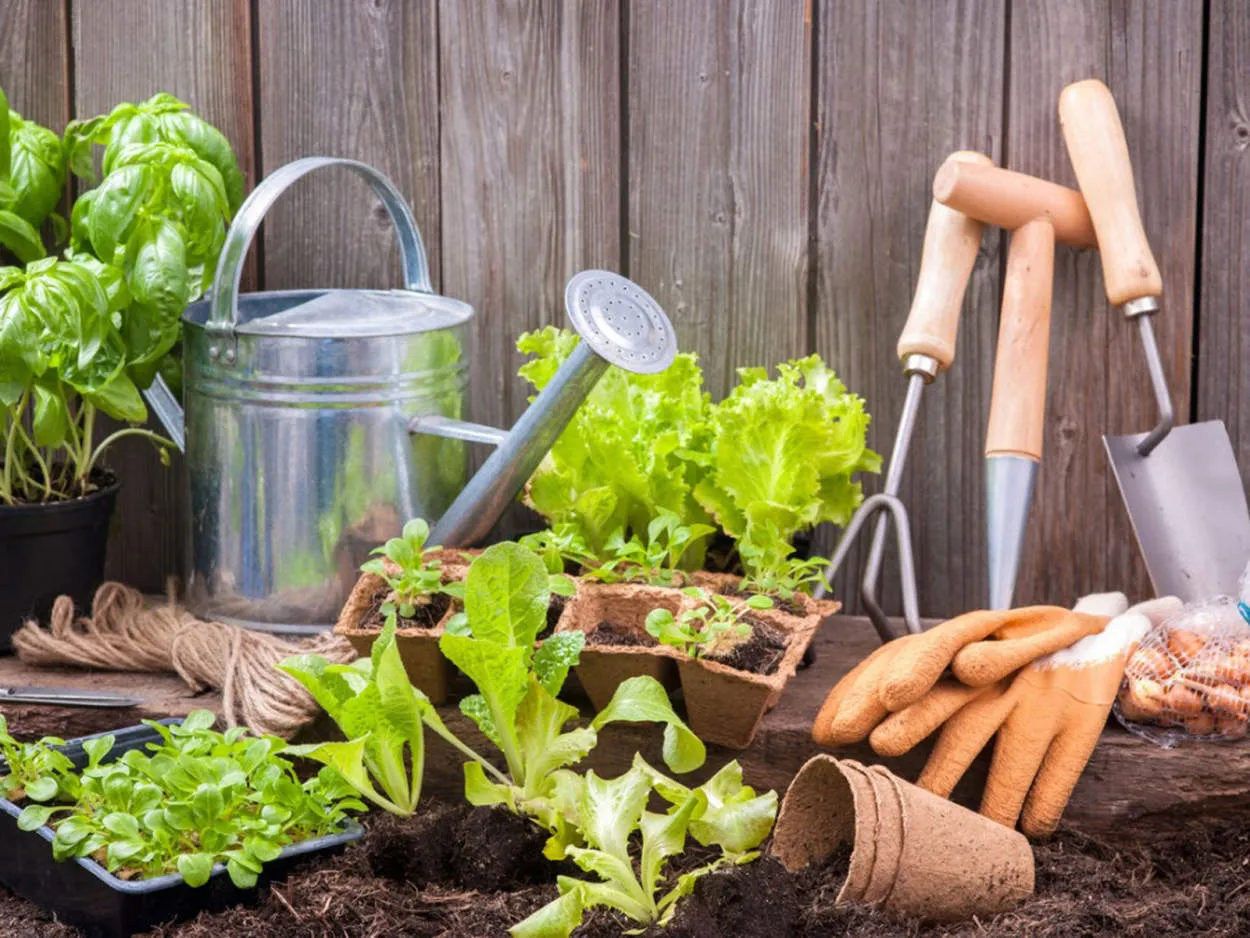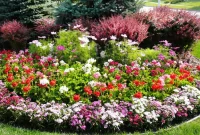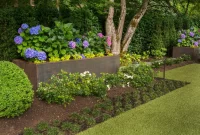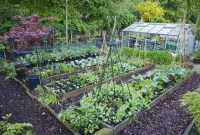Welcome to “The Beginner’s Guide to Starting a Home Garden”. In this article, we will provide you with essential tips and advice to help you kickstart your gardening journey and create a flourishing oasis right in your own backyard.
Essential Tools for Every Gardener
Starting a home garden can be both exciting and rewarding. Whether you have a spacious backyard or just a small balcony, having the right tools can make all the difference in your gardening journey. Here are some essential tools that every gardener should have:
1. Garden Gloves
Garden gloves are a must-have to protect your hands from scratches, blisters, and any harmful substances you may come across while working in the garden. Choose a pair that fits well and provides adequate flexibility and grip.
2. Hand Trowel
A hand trowel is a versatile tool that can be used for digging, planting, weeding, and transferring soil. Look for a sturdy trowel with a comfortable handle that will make your gardening tasks easier and more efficient.
3. Pruning Shears
Pruning shears, also known as secateurs, are essential for trimming and shaping the plants in your garden. Invest in a good quality pair that has sharp blades and a strong cutting mechanism for clean and precise cuts.
4. Watering Can or Hose
To keep your plants healthy and thriving, a watering can or hose is necessary. Watering cans are great for smaller areas, while a garden hose with an adjustable nozzle is ideal for larger gardens. Remember to water your plants regularly but avoid overwatering.
5. Garden Fork
A garden fork is useful for turning and aerating the soil, especially before planting new seeds or transplanting seedlings. Look for a fork with sturdy tines and a comfortable handle for easy maneuvering.
6. Garden Rake
A garden rake is essential for smoothing the soil, removing debris, and leveling the ground. It can also be used to spread mulch or compost evenly. Choose a rake with sturdy metal tines and a strong, comfortable handle.
7. Pruning Saw
For larger branches or thicker woody plants, a pruning saw is necessary. It allows you to make clean and precise cuts, promoting the overall health and appearance of your garden.
These are just a few of the essential tools that every gardener should have. Remember to clean and maintain your tools regularly to prolong their lifespan and ensure optimal performance. Gardening can be a fantastic and fulfilling hobby, and with the right tools, you’ll be well on your way to creating a beautiful and thriving home garden.
Choosing the Right Plants for Your Climate
When starting a home garden, it’s important to choose plants that are well-suited for your climate. This will increase the likelihood of success and ensure the health and vitality of your plants. Here are some tips to help you select the right plants:
1. Know Your Hardiness Zone
Begin by identifying your hardiness zone. This is based on the average annual minimum temperature of your area and can be easily found on the USDA Hardiness Zone Map. Different plants have different temperature requirements, so selecting plants within your zone will give them the best chance to thrive.
2. Consider Sunlight Requirements
Take note of the amount of sunlight your garden receives. Some plants prefer full sun, while others thrive in partial shade or full shade. Understanding the sunlight conditions in your garden will help you choose plants that suit your specific environment.
3. Evaluate Soil Conditions
Assess the soil in your garden. Different plants have different soil preferences, such as well-draining soil or acidic soil. Conduct a soil test to determine the pH level and nutrient content of your soil. This will guide you in selecting plants that can grow optimally in your soil conditions.
4. Research Plant Requirements
Before purchasing any plants, conduct thorough research on their specific requirements. Consider factors such as water needs, growth habits, and maintenance requirements. By understanding the needs of the plants you wish to grow, you can ensure they are compatible with your climate and gardening abilities.
5. Seek Local Advice
Consult with local gardening experts or visit nearby nurseries to gather information about plants that thrive in your area. Local advice can be invaluable in helping you make informed decisions about your plant choices.
Remember, selecting plants that are well-suited for your climate is essential for a successful home garden. By considering your hardiness zone, sunlight requirements, soil conditions, and doing thorough research, you can create a thriving garden filled with beautiful and healthy plants.
Basic Gardening Techniques
Gardening is a wonderful hobby that allows you to connect with nature and create a beautiful and productive space right in your own home. If you’re a beginner looking to start your own home garden, here are some basic techniques to get you started:
1. Choosing the Right Location
The first step in starting a home garden is finding the perfect location. Look for an area in your yard that receives adequate sunlight and has easy access to water. Consider the type of plants you want to grow and their specific sunlight requirements.
2. Preparing the Soil
Before planting, it’s essential to prepare the soil. Remove any weeds or grass and loosen the soil using a garden fork or tiller. Add organic matter such as compost or well-rotted manure to improve the soil’s fertility and drainage.
3. Choosing the Right Plants
When selecting plants for your garden, consider your climate, the amount of sunlight the area receives, and the soil conditions. Start with easy-to-grow plants like herbs, tomatoes, lettuce, and flowers that are suitable for beginners.
4. Watering and Mulching
Proper watering is crucial for the success of your garden. Water your plants deeply and regularly, making sure the soil is consistently moist but not waterlogged. Applying a layer of mulch around your plants will help retain moisture and prevent weed growth.
5. Regular Maintenance
Maintaining your garden is essential to keep it healthy and productive. This includes regular weeding, pruning, and fertilizing as needed. Monitor your plants for pests and diseases, and take appropriate measures to prevent and control them.
6. Harvesting and Enjoying
Once your plants are ready for harvest, it’s time to enjoy the fruits of your labor. Harvest your vegetables and herbs when they are fully ripe and use them in your favorite recipes. Take the time to appreciate the beauty and tranquility of your garden.
Starting a home garden may seem daunting at first, but with these basic gardening techniques, you’ll be well on your way to creating a thriving oasis right in your backyard. Remember to start small, learn as you go, and most importantly, have fun!
Maintaining Your Garden Through the Seasons
Having a home garden can be a rewarding experience, but it requires consistent maintenance throughout the year. To ensure your garden thrives, here are some essential tasks you need to undertake for each season.
Spring:
During this season, focus on preparing your garden for new growth. Start by removing any debris and weeds that have accumulated over the winter. Trim back any dead or damaged branches and rake the soil to remove any compacted areas. This is also a great time to amend the soil with compost or organic matter to enrich its nutrients.
Once your garden is prepped, consider planting early spring crops such as lettuce, radishes, and peas. Additionally, sowing seeds for flowers and herbs will help create a colorful and fragrant garden.
Summer:
In the summer, the key is to ensure your garden receives adequate water. Water deeply and less frequently to promote deep root growth. It’s also important to apply mulch around your plants to help retain moisture and suppress weeds.
Regularly check your plants for unwanted pests and diseases. By catching any issues early on, you can prevent them from spreading and harming your garden. Remember to deadhead flowers regularly to promote continuous blooming.
Fall:
As autumn arrives, it’s time to harvest any remaining crops and clean up your garden. Remove any spent plants and clear away fallen leaves. Composting these materials will provide valuable organic matter for your garden in the future.
Consider planting cool-season vegetables and flowers, such as cabbage, carrots, and pansies, to extend your garden’s productivity. Mulch around newly planted perennials to protect them from winter frost.
Winter:
During the winter months, it’s important to protect your garden from extreme weather conditions. Cover delicate plants with burlap or other protective materials to shield them from frost or heavy snow. Keep an eye out for any damage caused by storms and promptly address any issues.
Winter is also the perfect time for planning and preparing. Use this period to research and gather inspiration for the upcoming gardening season. Consider designing new layouts, ordering seeds, or attending gardening workshops to expand your knowledge.
Maintaining your garden throughout the seasons requires effort, but the rewards are well worth it. By following these guidelines, you can ensure your home garden remains vibrant and productive all year round.
Conclusion
In conclusion, starting a home garden is a rewarding and beneficial activity for beginners. It provides a sense of satisfaction, promotes a healthier lifestyle, and allows individuals to connect with nature. With the right knowledge and resources, anyone can create a thriving garden right in their own backyard.







